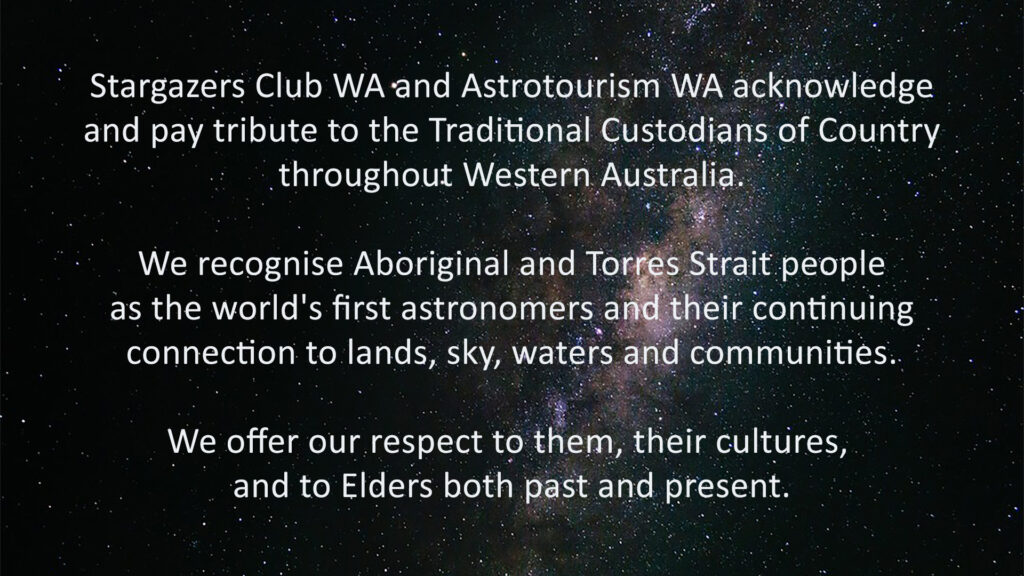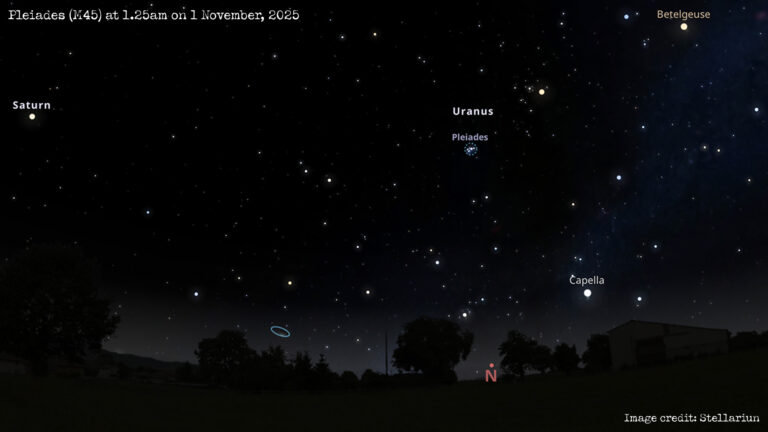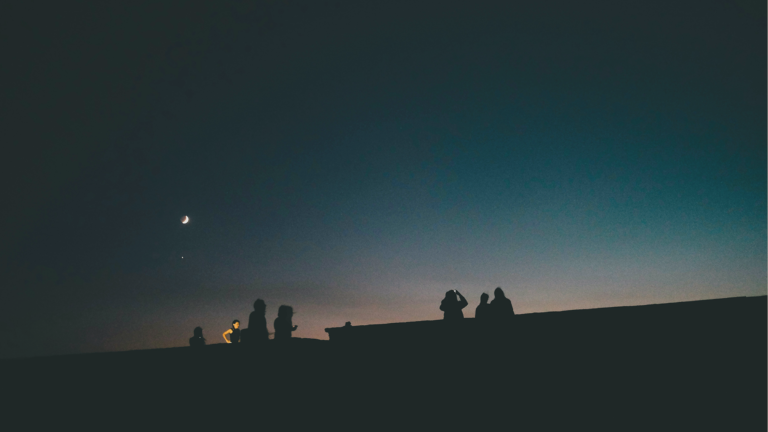It’s the spooky Hallowe’en season again, and we’re sharing with you six stargazing sights that might send shivers down your spine. Keep reading for skulls, witches and more.
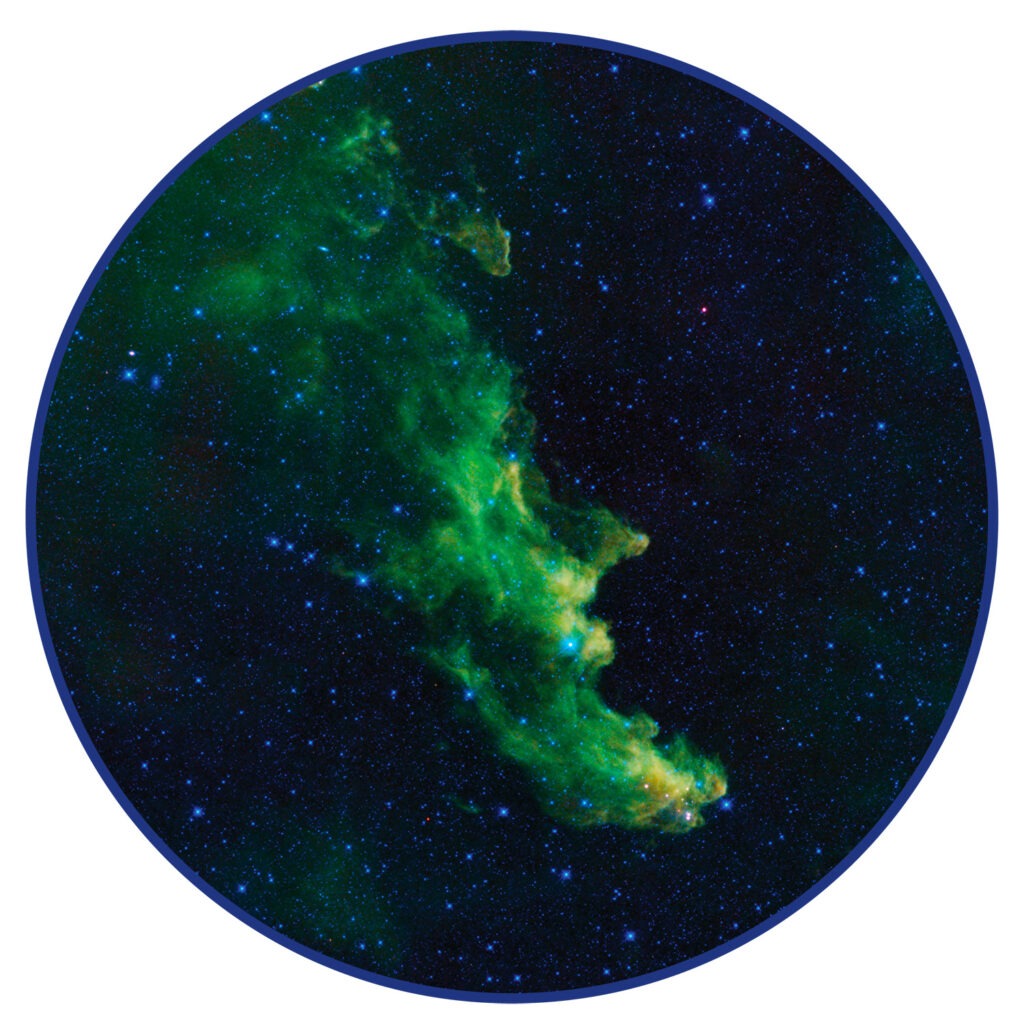
The Witch Head Nebula is properly known by its far less scary names, IC 2118 or NGC 1909. You can see how it got its more lyrical name, because this nebula looks like a fairytale witch’s head.
The nebula is a stellar nursery, and, in this image, the infrared light produced by the massive stars within its dust clouds causes its glow.
Although the witchy nebula appears green in this picture (taken by NASA’s Wide-Field Infrared Survey Explorer), in visible light, the Witch Head Nebula looks much more blue.
IC 2118 is about 900 light-years from Earth, and is incredibly faint (it has an apparent magnitude of 13, similar to Pluto), so we can’t expect to see it with much less than a powerful telescope.
Luckily, there are abundant striking images of the Witch Head Nebula online, find more on Astronomy Picture of the Day.
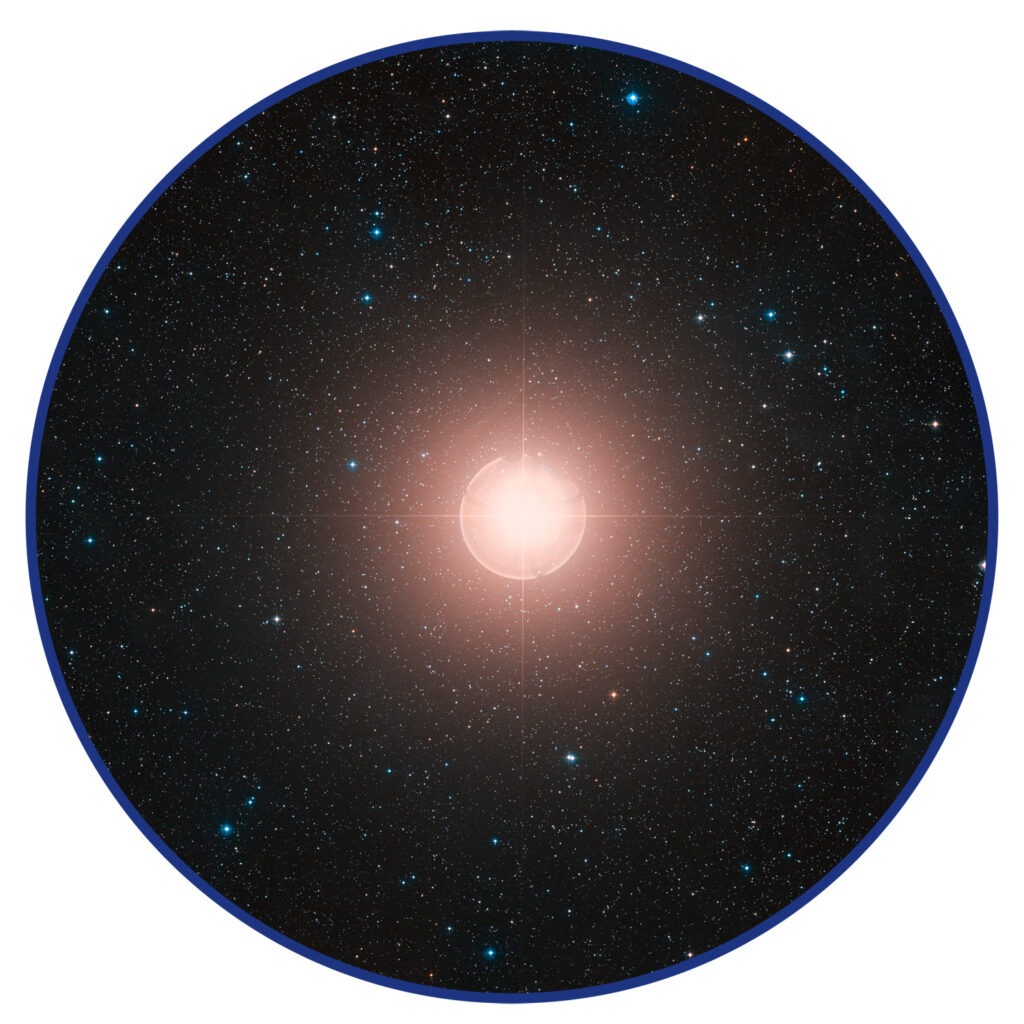
Betelgeuse is a red supergiant star found in Orion, and it just scrapes into the ten brightest stars in the night sky. On Hallowe’en night, you’ll find the red star in the east around 10.30pm, reaching its highest point above the northern horizon before 4am.
Beyond sharing its name with the villain from the movie Beetlejuice, the star itself isn’t a frightening sight but it caused a stir between late 2019 and February 2020.
At the time, astronomers noticed Betelgeuse dimming noticeably, sparking excitement that we might witness the star go supernova. Disappointingly, the dimming was more likely caused by the star ejecting hot, dense material, which formed a dust cloud, obscuring the star.
Aboriginal oral traditions have documented the star’s periodic brightening and dimming for millennia. Duane Hamacher, astronomer and anthropologist, wrote how Kokatha communities in South Australia’s Great Victoria Desert share an oral tradition that describes the variability of the red–giant star, thousands of years before it was recorded by Western astronomers.
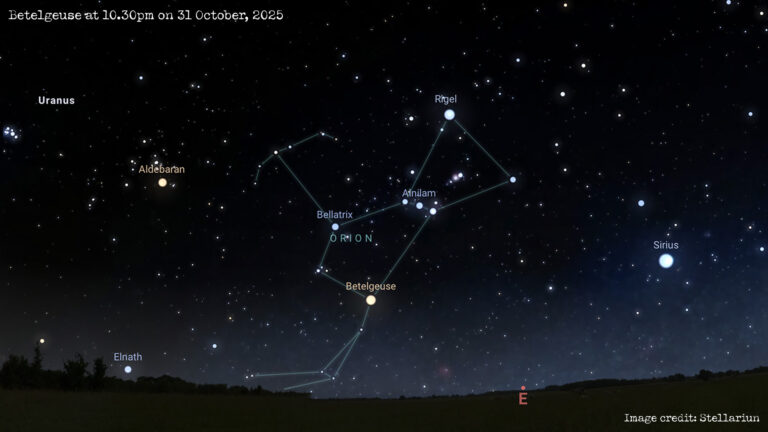
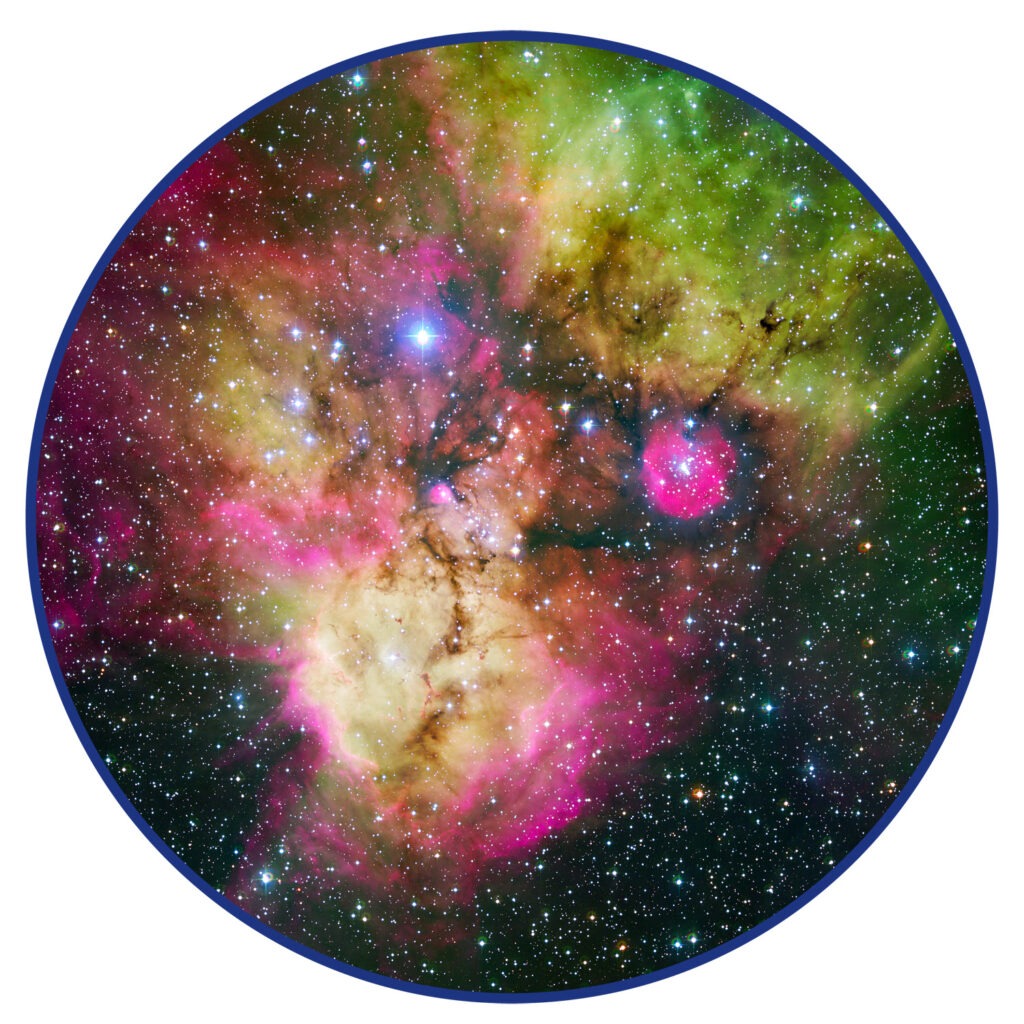
The Skull and Crossbones nebula resembles a spooky, staring skull with a hollow face.
Also known by the less spooky name NGC 2467, the Skull and Crossbones is only a few million years and it’s a very active stellar nursery. The nebula’s hot young stars that shine so brightly in the image are gradually burning off the gas surrounding them, causing the nebula to glow so strikingly.
But NGC 2467 isn’t a single nebula; instead, vast distances separate its star clusters, moving at very different speeds to each other.
As well as resembling a skull, the nebula is also sometimes likened to a mandrill, which doesn’t make it any less intimidating on this scale. It also shouldn’t be confused with the similarly-named Skull Nebula (NGC 246).
You’ll find the Skull and Crossbones nebula in the Puppis constellation, which once formed part of Argo Navis, a constellation named after the mythical Greek hero Jason’s ship, the Argo. Since Jason was famous for stealing the Golden Fleece, a skull and crossbones is fitting.
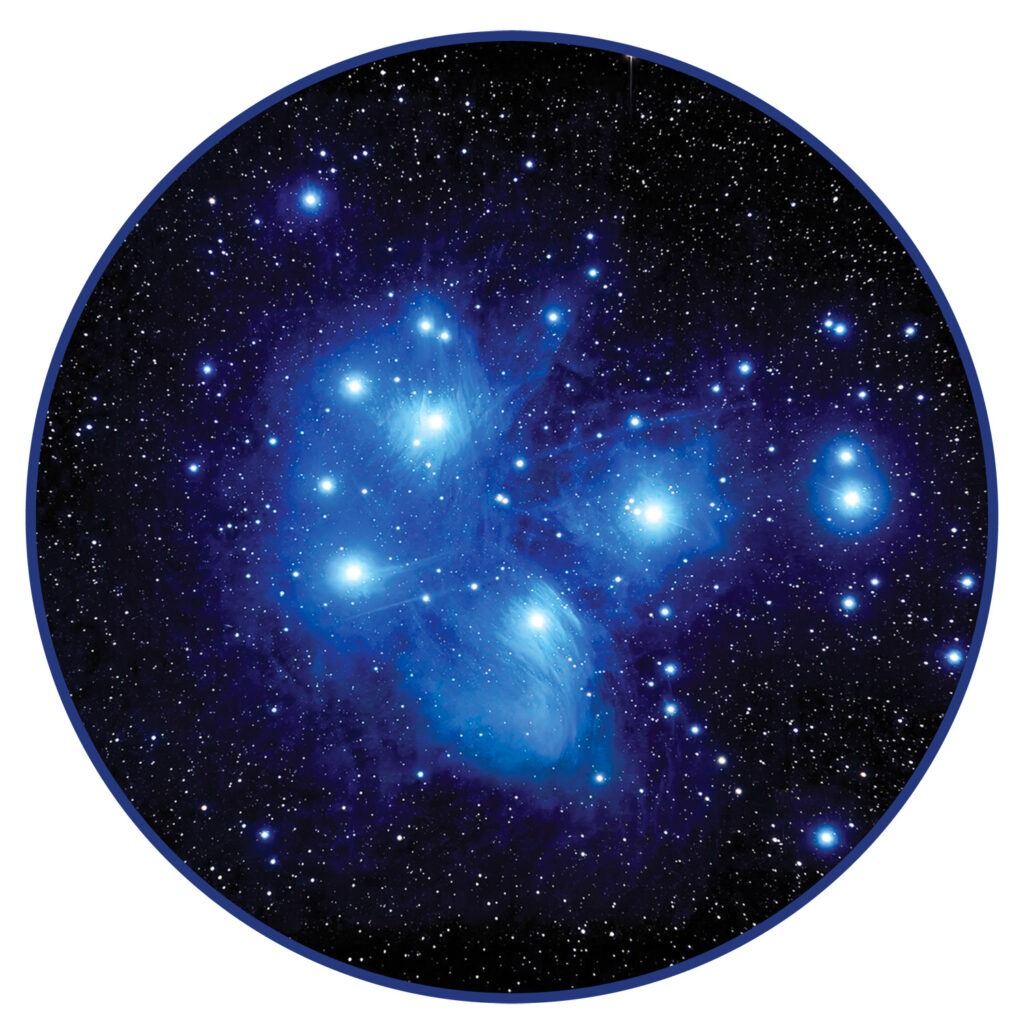
The Pleiades star cluster doesn’t look scary, and it doesn’t have a spooky name, so why is it on our list? Hallowe’en and the Pleiades have been linked to each other for a very long time.
According to Earthsky.org, the Pleiades traditionally reached its highest point in the northern hemisphere sky at midnight on the night of the Celtic Samhain festival. Because of this, the star cluster came to be associated with the thinning of the veil between worlds.
31 October also marks the approximate midway point between the September equinox and the December solstice, one of four such cross-quarter days in the year. It’s easy to understand how, in the northern hemisphere, Samhain/Hallowe’en also represented the beginning of winter.
Various factors mean that the Pleiades midnight culmination now occurs on 21 November, but Hallowe’en remains fixed on 31 October. In the early hours of 1 November, you’ll find Pleiades in the northern sky.
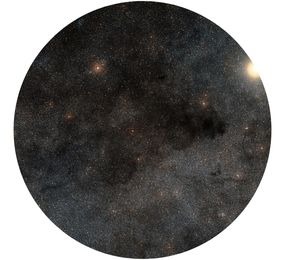
The Coalsack Nebula (also known as Caldwell 99) is a dark nebula. Instead of being bright or colourful, these nebula are dense clouds of interstellar dust that block the light of objects behind them, creating spooky, dark laneways twisting through galaxies.
Caldwell 99 obscures part of the Milky Way, and it forms the head of the Aboriginal constellation the Emu in the Sky (weitj).
The Coalsack Nebula is 600 light-years from Earth and about 100 light-years across. And because it’s a dark nebula, you’ll have no problem seeing it with the naked eye: look to the left-hand side of the Southern Cross, and find the dark patch through the Milky Way.
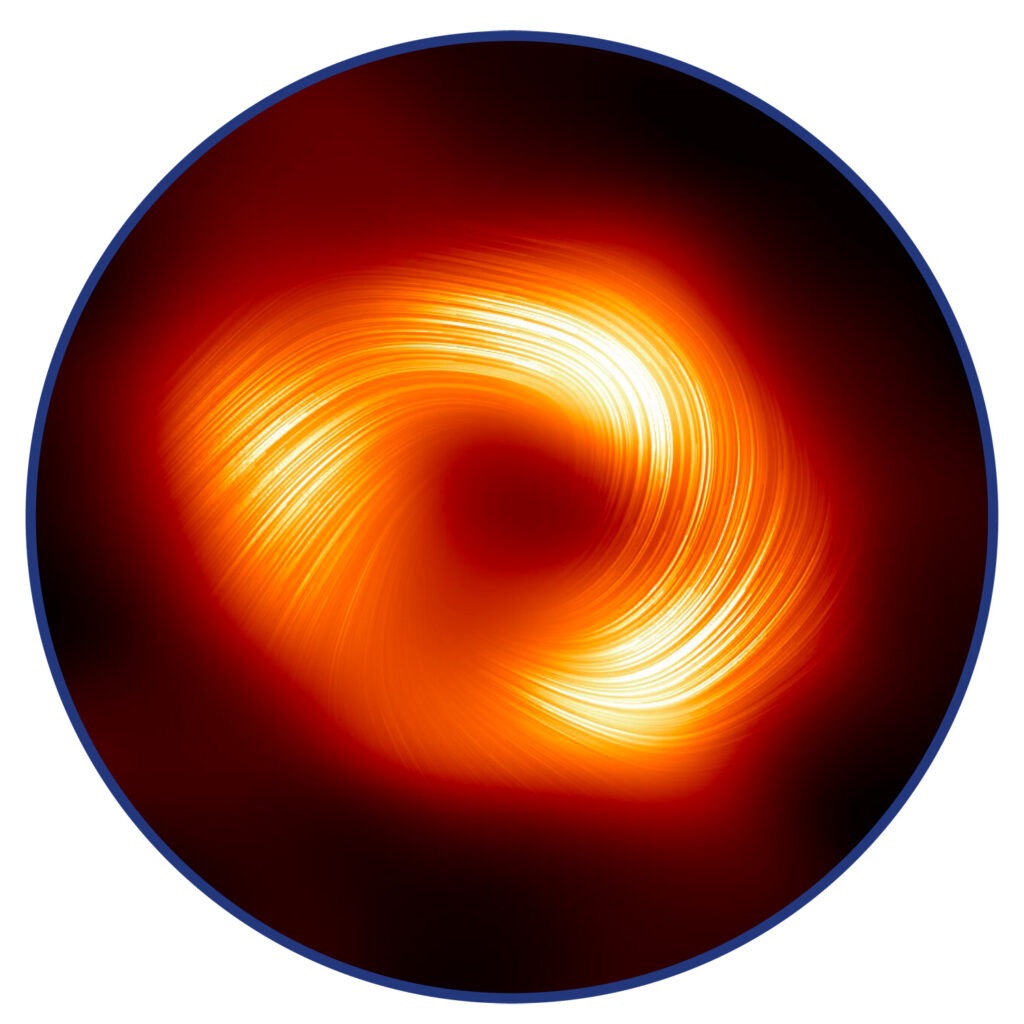
A monster is lurking at the Galactic Centre of the Milky Way. The black hole, named Sagittarius A* (or Sgr A*), has the equivalent mass of four million Suns, and its event horizon has a 12 million km radius.
When viewed from Earth, our galaxy’s supermassive black hole is near the border of the Sagittarius and Scorpius constellations, appearing visually close to the Butterfly Cluster (M6) and the Lambda Scorpii triple star system.
Sgr A* is a very bright object, but that’s in radio and infrared wavelengths, not visually. In images of black holes, like this one, what you’re looking at is the superheated gas falling into the hole.
Our black hole is also strangely quiet. Astronomers say that as recently as a few hundred years ago, Sgr A* was releasing a million times more energy than it is now. They also expect it to become much more active again in the foreseeable future.
But don’t worry: Sgr A* is 26,000 light-years away, and it’s incredibly unlikely that any black hole will ever pose a risk to Earth.

Jay Chesters
Jay Chesters is a wordsmith with a little bit of a thing for the stars. As a cosmic storyteller with a love for astronomy and space that's out of this world, Jay’s always eager to share his knowledge and passions.
Launch your hobby into the stratosphere
Claim your free 2-hour private telescope lesson, plus get 12 free events every year for you and a friend. Platinum Universe members get it all, for less than a couple of coffees a week.
